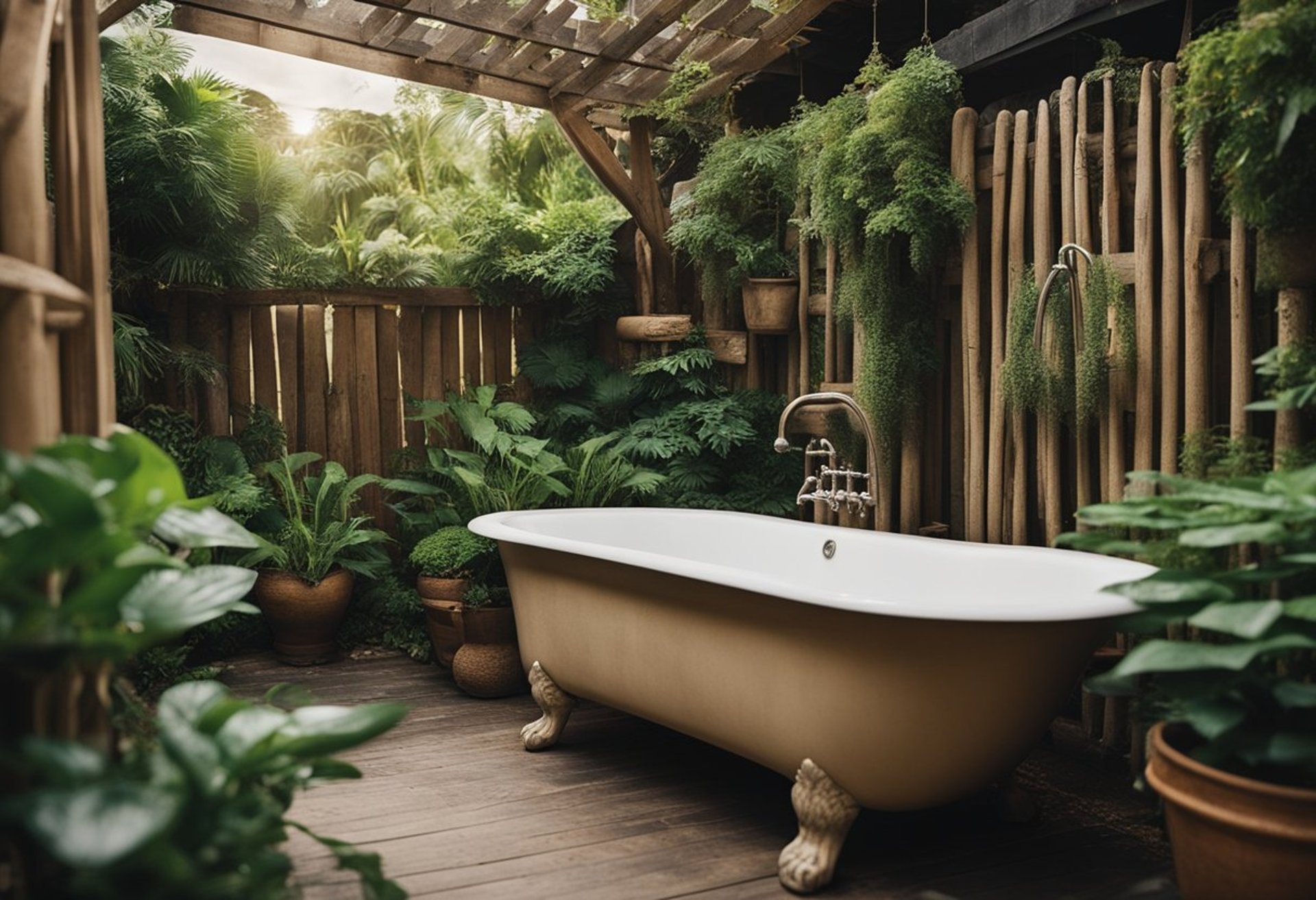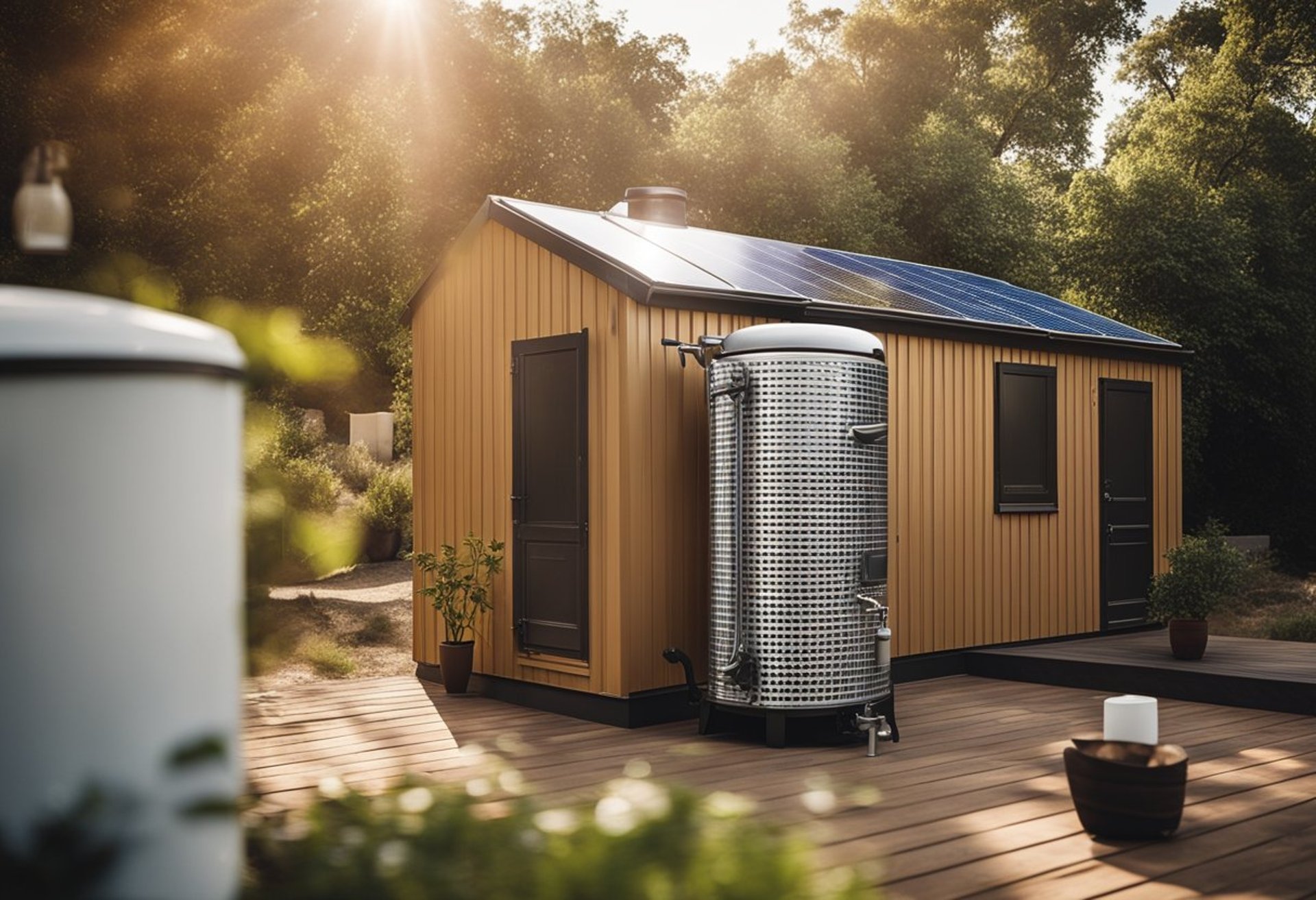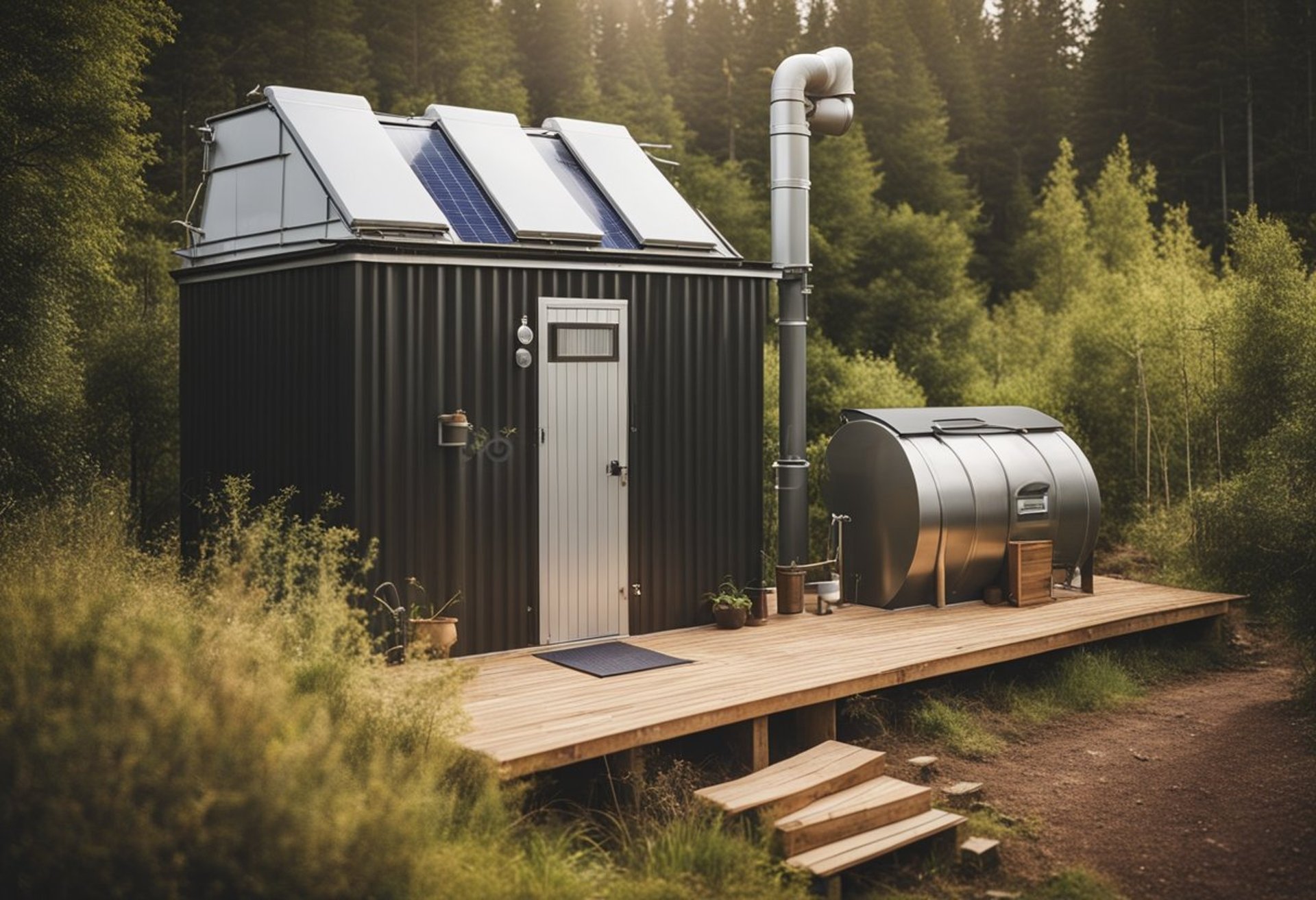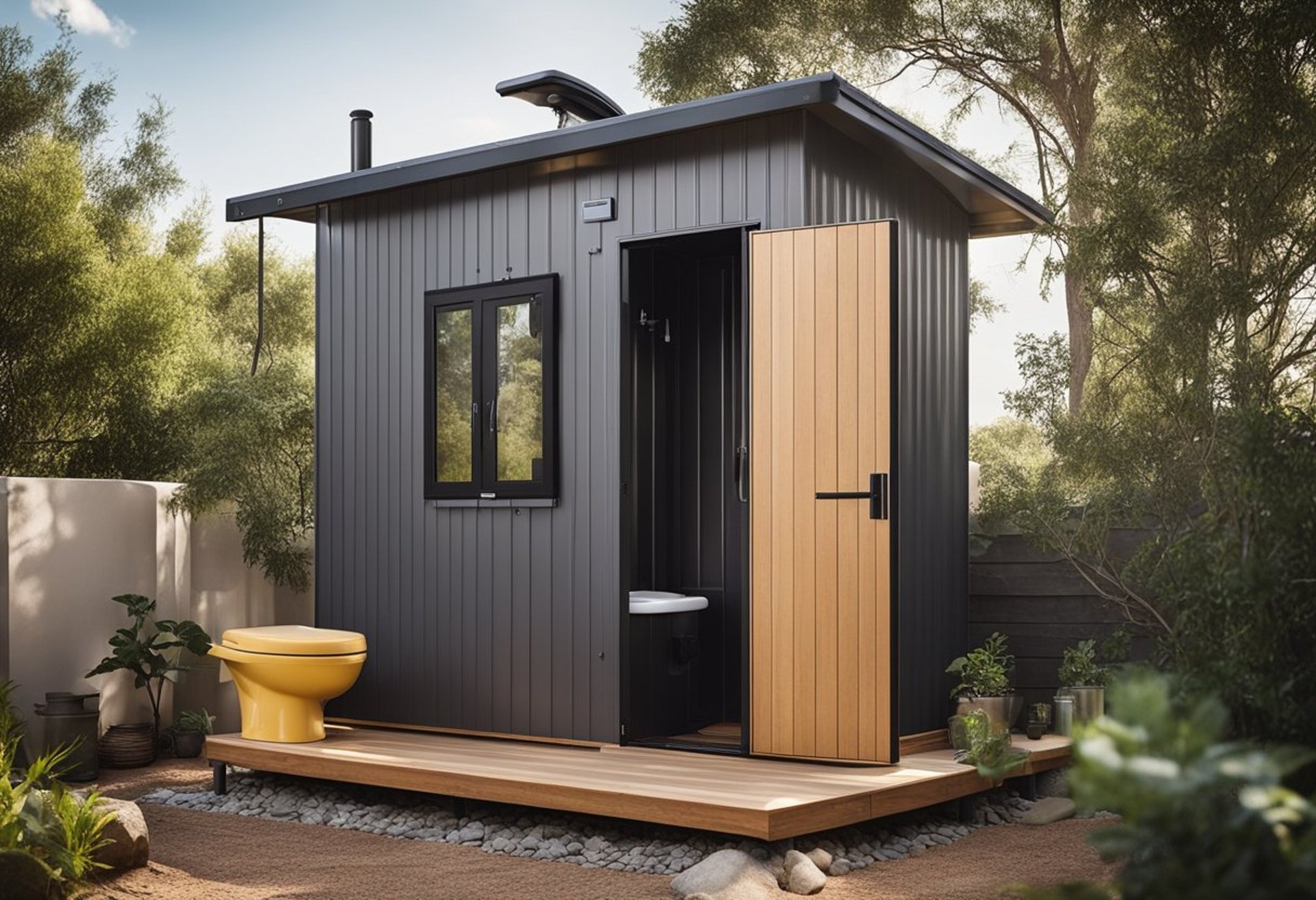5 Off-Grid Bathroom Design: Key Features for Sustainable Living
Creating a functional and aesthetically pleasing bathroom in an off-grid setting presents unique challenges and opportunities. We can transform limited resources into innovative designs that prioritize sustainability and comfort. This article will explore five inspiring off-grid bathroom designs that balance practicality with a natural aesthetic.
5 Off-Grid Bathroom Design: Key Features for Sustainable Living
Creating a functional and aesthetically pleasing bathroom in an off-grid setting presents unique challenges and opportunities. We can transform limited resources into innovative designs that prioritize sustainability and comfort. This article will explore five inspiring off-grid bathroom designs that balance practicality with a natural aesthetic.
In our pursuit of self-sufficiency, we find that bathroom spaces can become both eco-friendly and stylish. From natural materials to water-saving fixtures, we can reimagine these essential spaces to enhance our off-grid lifestyle.
Composting Toilet
A composting toilet is an efficient solution for off-grid bathrooms. We find that it reduces water usage and minimizes the environmental impact of waste disposal.
These toilets convert human waste into compost through natural processes. They typically use aerobic bacteria to break down the waste, resulting in a nutrient-rich product that can be used for landscaping.
Installation is straightforward, and many models do not require plumbing. This feature makes them ideal for remote locations.
Maintenance involves regular emptying of the compost container and occasional aeration. These tasks keep the system functioning smoothly and ensure sanitary conditions.
We appreciate that composting toilets often have a simple design, which can blend well with various aesthetic choices. They come in many styles and sizes to fit our specific needs.
With proper care, a composting toilet can effectively serve our off-grid lifestyle while promoting sustainability.
Solar-Powered Hot Water Heater
We can effectively harness solar energy for our hot water needs. A solar-powered hot water heater uses solar panels to capture sunlight and convert it into heat. This system can be a reliable and efficient way to provide hot water, especially in off-grid locations.
By installing solar collectors, we can heat water directly or channel it through a storage tank. It ensures we have a consistent hot water supply without relying on traditional energy sources.
Implementing this technology may reduce our reliance on fossil fuels and lower our utility costs. Additionally, many systems require minimal maintenance, making them practical for off-grid living.
Choosing the right system depends on our location, climate, and hot water usage. We should consider solar water heaters that come with a backup system for cloudy days. This way, we ensure we always have access to hot water when needed.
3) Rainwater Harvesting System
Incorporating a rainwater harvesting system can significantly enhance our off-grid bathroom design. This method allows us to utilize natural precipitation as a sustainable water source.
We begin by installing gutters that channel rainwater from the roof into storage tanks. These tanks can range in size based on our water needs and rainfall patterns.
Filtration systems are essential to ensure the collected water is clean and safe for use. We can use simple filters, such as mesh screens, followed by a more advanced filtration method as required.
The stored rainwater can be used for various bathroom functions, including flushing toilets and watering plants. This approach not only conserves water but also reduces our reliance on external sources.
By implementing rainwater harvesting, we take proactive steps towards sustainability while enhancing the functionality of our off-grid bathroom.
4) Greywater Recycling Setup
Implementing a greywater recycling system can significantly enhance our off-grid bathroom's sustainability. Greywater refers to the wastewater generated from sinks, showers, and laundry, excluding toilet waste.
To begin, we need to install a simple collection system. This involves directing greywater from drains into a storage tank. Using a series of pipes and filters, we can keep the system efficient.
Next, we should consider treatment options. A basic filtration system helps remove solid particles, making greywater suitable for irrigation or toilet flushing. Additional treatment methods can be added for specific needs.
We also need to ensure proper plumbing layout. It’s essential to have clear separation between greywater and blackwater systems to avoid contamination.
Finally, understanding local regulations is crucial. Each area may have specific guidelines on greywater use, so we must comply with those to avoid potential issues.
5) Low-Flow Showerhead
We can significantly reduce water usage in our off-grid bathroom with a low-flow showerhead. These fixtures typically use less than 2.5 gallons per minute, compared to standard models which often use up to 5 gallons.
By selecting a low-flow option, we not only conserve water but also save on energy costs associated with water heating. Improved technology in these showerheads maintains pressure, so we don't sacrifice our shower experience.
Many models come with additional features, such as adjustable spray patterns. This versatility allows us to customize our shower to our preference while staying eco-friendly.
When choosing a low-flow showerhead, it’s important to look for Energy Star ratings or certifications. These endorsements ensure that the product meets specific water efficiency standards, giving us peace of mind in our selection.
Installing a low-flow showerhead is simple and can usually be done without professional help. This small change can make a big impact on our water consumption and energy use in an off-grid setting.
Design Principles for Off-Grid Bathrooms
When designing off-grid bathrooms, we prioritize sustainability and water conservation. These principles help ensure that our designs are not only functional but also environmentally responsible.
Sustainability Practices
Incorporating sustainable materials is essential. We recommend using reclaimed wood, bamboo, or recycled composites for construction. These materials minimize environmental impact and support a circular economy.
Fixtures should be selected for durability. Low-flow toilets and energy-efficient lighting reduce resource consumption. For countertops, options like recycled glass or sustainable stone can enhance aesthetics while being eco-friendly.
Natural ventilation is significant in these designs. We can achieve this through strategically placed windows, which reduces reliance on mechanical ventilation systems. Additionally, using solar-powered lighting fixtures can further lower energy use.
Water Conservation Techniques
Water-saving technologies play a critical role in off-grid bathrooms. We should consider dual-flush toilets that allow users to choose between a full flush and a reduced flush, helping conserve water.
Installing low-flow showerheads and faucets also minimizes water usage. These fixtures can reduce flow rates significantly, while still providing sufficient pressure for effective use.
Rainwater harvesting is an effective strategy. We can collect rainwater from roofs, storing it for bathroom use. Complementing this with graywater recycling systems enables us to reuse water from sinks and showers, reducing overall consumption.
By integrating these techniques into our designs, we create functional, eco-friendly spaces that cater to the needs of off-grid living.
Choosing the Right Materials
Selecting appropriate materials for an off-grid bathroom is essential. We need to balance sustainability with durability to create a functional and eco-friendly space. The right choices can improve our comfort while minimizing environmental impact.
Eco-Friendly Flooring Options
When it comes to flooring, we can consider several eco-friendly materials. Bamboo is a popular choice due to its rapid growth and renewability. It's also naturally resistant to water and insects.
Cork is another excellent option. This sustainable material is harvested from the bark of cork trees, which regenerates quickly. Cork provides good insulation and is comfortable underfoot.
Reclaimed wood offers a rustic aesthetic while reducing waste. It's important to ensure that the wood is treated for water resistance to withstand bathroom humidity.
Additionally, ceramic tiles made from recycled materials are durable and easy to clean. They can mimic natural stones while providing a waterproof barrier.
Durable and Sustainable Fixtures
Choosing fixtures that prioritize durability and sustainability is crucial. Low-flow toilets can significantly reduce water usage without compromising performance. We should look for models that are certified by the EPA's WaterSense program.
Faucets and showerheads with aerators can also enhance water efficiency. Options made from stainless steel or other recycled materials ensure longevity and a reduced environmental footprint.
For bathtubs, we may consider composite materials that are both durable and lightweight. These options often use recycled content, aligning with our sustainable goals.
LED lighting is another must-have for energy efficiency. It has a longer lifespan and consumes less energy compared to traditional bulbs, aiding in off-grid energy conservation.
These material choices support our vision of a sustainable, off-grid bathroom while ensuring functionality and durability.
Power Solutions for Off-Grid Bathrooms
When designing an off-grid bathroom, selecting the right power solutions is crucial. We can utilize sustainable energy sources like solar power and implement energy-efficient lighting to enhance functionality while maintaining eco-friendliness.
Solar Power Integration
Solar power is a reliable and renewable energy source for off-grid bathrooms. We can install solar panels on the roof to harness sunlight, converting it to electricity for various uses.
A typical solar setup includes the following components:
Solar Panels: Capture sunlight and convert it into usable energy.
Inverter: Converts DC from solar panels to AC for standard appliances.
Batteries: Store energy for use when sunlight is minimal.
For optimal performance, we should position panels in a location with maximum sun exposure and consider the energy consumption of devices in our bathroom. Knowing how much power we need helps us determine the appropriate size and number of solar panels required.
Energy-Efficient Lighting
Choosing energy-efficient lighting significantly reduces energy consumption in off-grid bathrooms. We should focus on LED lights, which use up to 75% less energy than traditional bulbs and have a longer lifespan.
Benefits of LED lighting include:
Longevity: LEDs can last up to 25,000 hours.
Low Heat Emission: Less heat means more efficiency.
Variety: Available in various styles and brightness levels.
By installing motion sensors or dimmers, we can enhance efficiency further. This allows lights to turn off automatically when the space is not in use, conserving energy while maintaining a welcoming ambiance. The combined use of solar power and energy-efficient lighting creates an environmentally responsible and functional off-grid bathroom.





